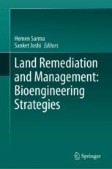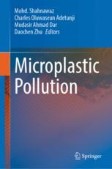Search
Search Results
-
Mycoremediation of Heavy Metals and/or Metalloids in Soil
Soil and water pollution is a matter of great concern in the twenty-first century, the majority of which is caused by various organic compounds,...
-
Recent Advancements in Mycoremediation
The anthropogenic activities and other unintentional causes have imposed a strain on the ecosystem and natural resources. Bioremediation is a rapidly...
-
Mycoremediation of Industrial Textile Wastewater Using Ganoderma lucidum Pellets and Activated Dolomite in Batch Bioreactor
In the world of fast fashion, textile industries are blooming rapidly to meet the consumer’s demands. However, vast amounts of wastewater have been...

-
Fungal bioproducts for petroleum hydrocarbons and toxic metals remediation: recent advances and emerging technologies
Petroleum hydrocarbons and toxic metals are sources of environmental contamination and are harmful to all ecosystems. Fungi have metabolic and...

-
Impact of Novel Remediation Technology: Significant Role in the Removal of Toxic Pollutants via Sustainable Approaches
Urbanization and industrial expansion produce a wide range of toxic substances that are destructive to ecosystems and human health, posing a risk to...
-
Biodegradation of Environmental Pollutants by Marine Yeasts
Organic contaminants are among the main pollutants of ecosystems because of their presence in domestic, agricultural, or industrial effluents....
-
Enzymatic Extract from Luffa-Immobilized Pleurotus sajor-caju: A Promising Biocatalyst for Agro-Industrial Pollutant Reduction and Toxicity Mitigation
In biotechnological methods for biodegradation, the effectiveness of detoxifying xenobiotics and recalcitrant substances in soil and water has...

-
Mycodegradation of Microplastics
Microplastic pollution has gained much more attention in the research field as it has created a greater threat to biota worldwide. A major source of...
-
Psychotropic Drugs of Emerging Concerns in Aquatic Systems: Ecotoxicology and Remediation Approaches
Carbamazepine (CBZ) and diazepam (DZP) are often prescribed for the treatment of stress, muscle spasm, anxiety, alcohol withdrawal symptoms,...

-
Exploiting Marine Fungi in the Removal of Hazardous Pollutants and Biomass Valorisation
The environment and human health are now seriously threatened by pollution. Organic contaminants have a long half-life in the environment and possess...
-
Mycoremediation of azole antifungal agents using in vitro cultures of Lentinula edodes
Azole antifungal agents are widely used as active ingredients in antifungal pharmaceuticals and agricultural fungicides. An increase in the use of...

-
Bioremediation Technologies for the Treatment of Water Contaminated by Organic and Inorganic Contaminants
This chapter explains the significance of the removal of selected categories of organic contaminants (polycyclic aromatic hydrocarbons, petroleum...
-
Degradation of a leather-dye by the combination of depolymerised wood-chip biochar adsorption and solid-state fermentation with Trametes villosa SCS-10
Adsorption into biochar-derived materials and mycoremediation are promising technologies for removing dyes from solid and liquid matrices. This study...

-
Petroleum-contaminated soil: environmental occurrence and remediation strategies
Soil is an environmental matrix that carries life for all living things. With the rise of human activities and the acceleration of population, the...

-
Feasibility of the use of Lentinula edodes mycelium in terbinafine remediation
A detailed understanding of the fate of xenobiotics introduced into the environment and the mechanisms involved in their biotransformation,...

-
Myco-decontamination of azo dyes: nano-augmentation technologies
Effluents of textile, paper, and related industries contain significant amounts of synthetic dyes which has serious environmental and health...

-
Marine Bacteria for Bioremediation
Marine pollution has been increasing over the years and can impact directly living organisms. The continued pollution of soil and fresh water by...
-
Biotechnological Innovations for Environmental Bioremediation
This edited book focuses on the application and implementation of bioremediation and other strategies to create a sustainable and healthy...

-
Removal of 2,4-D herbicide from aqueous solution by Pleurotus ostreatus
The presence of 2,4-dichlorophenoxyacetic acid (2,4-D) in aquatic environments is one of the consequences of pesticides use. The reduced capacity of...

-
A Potential Involvement of Metallothionein in the Zinc Tolerance of Trichoderma harzianum: Experimental Findings
Metallothioneins are a group of cysteine-rich proteins that play an important role in the homeostasis and detoxification of heavy metals. The...

